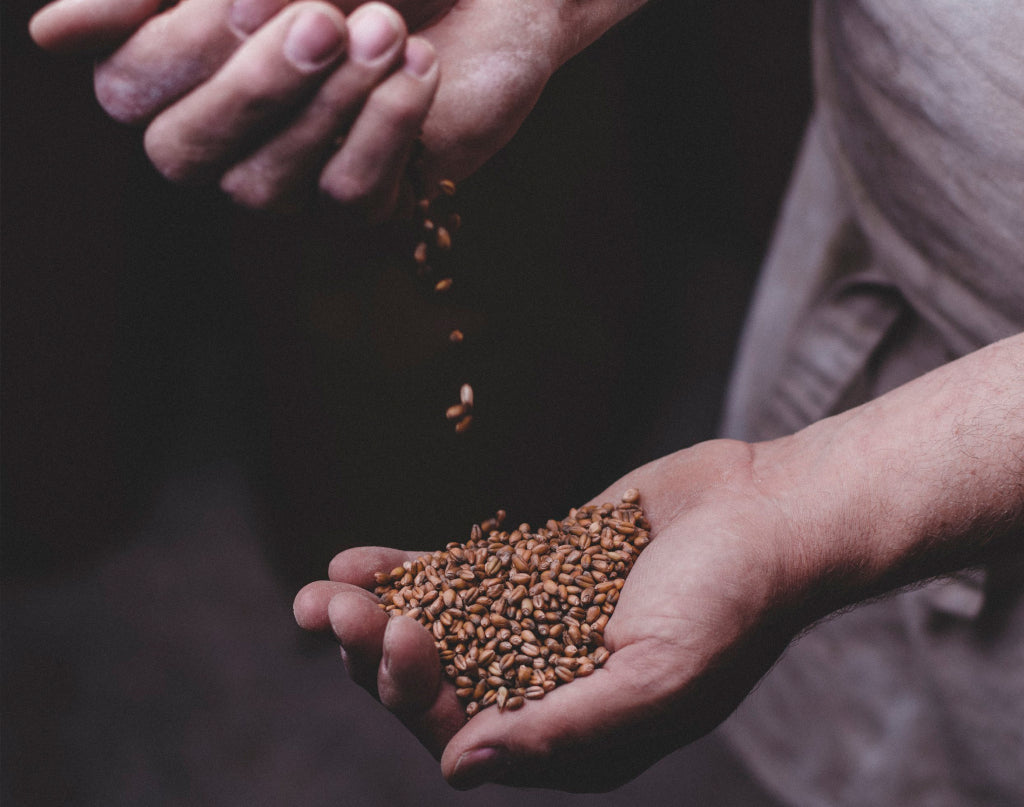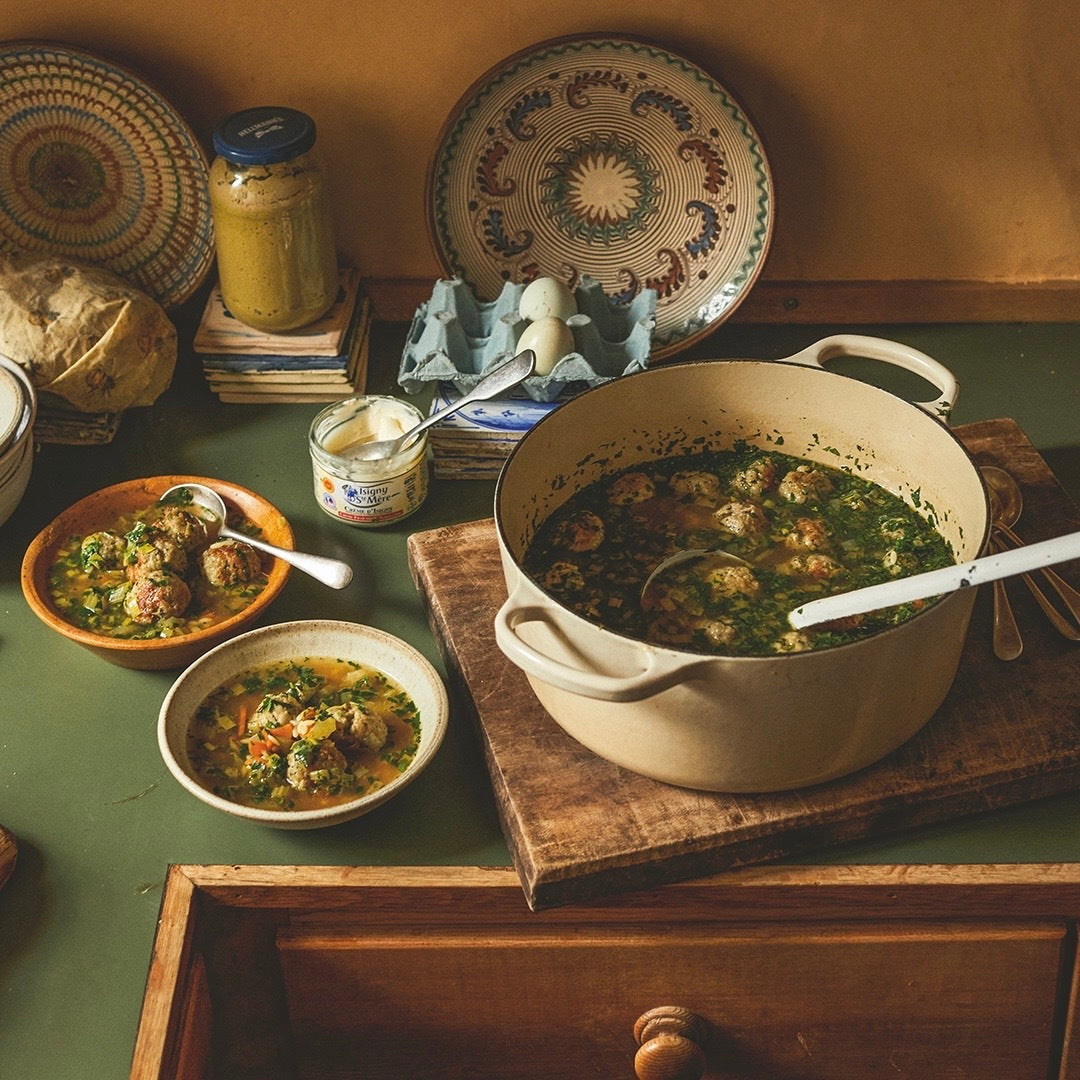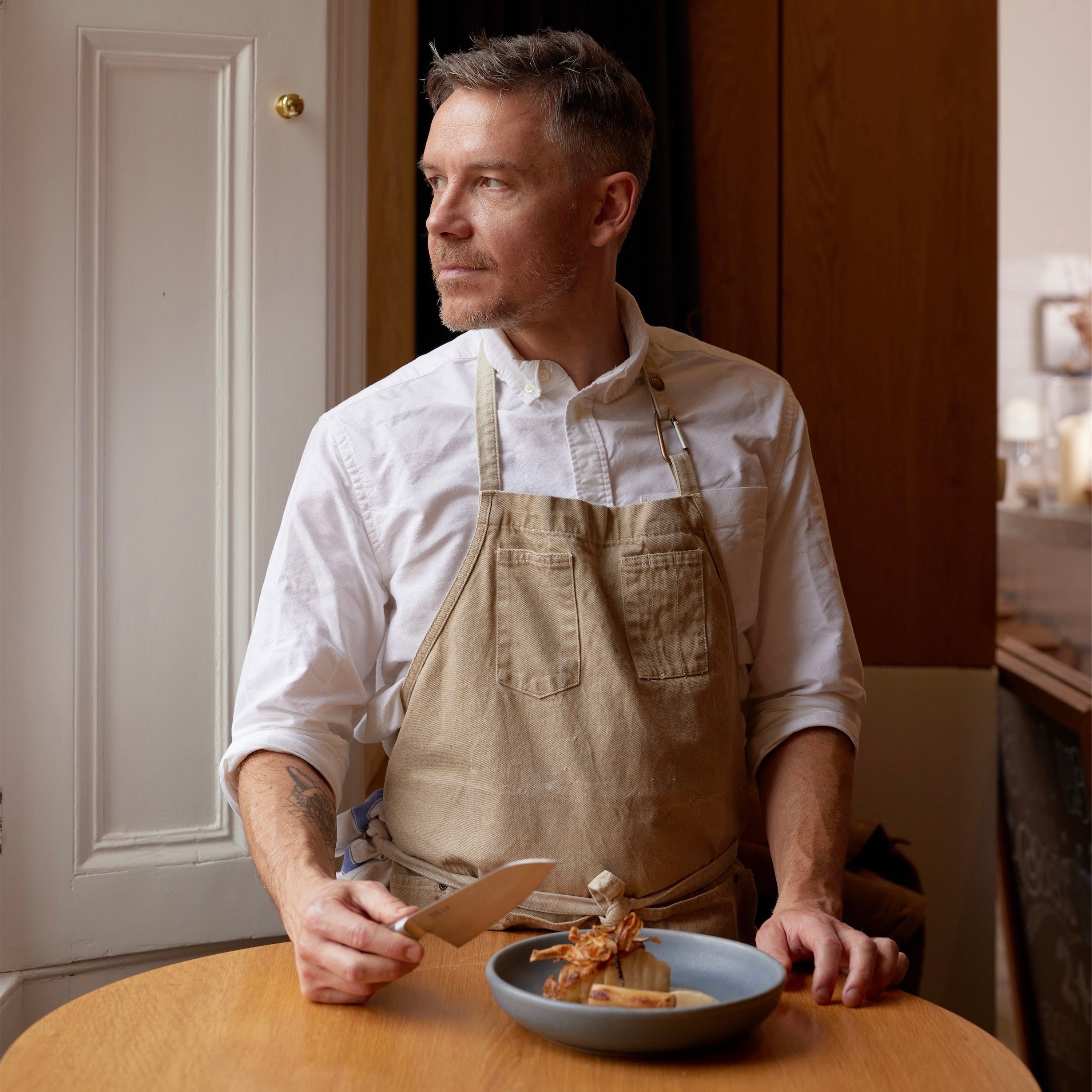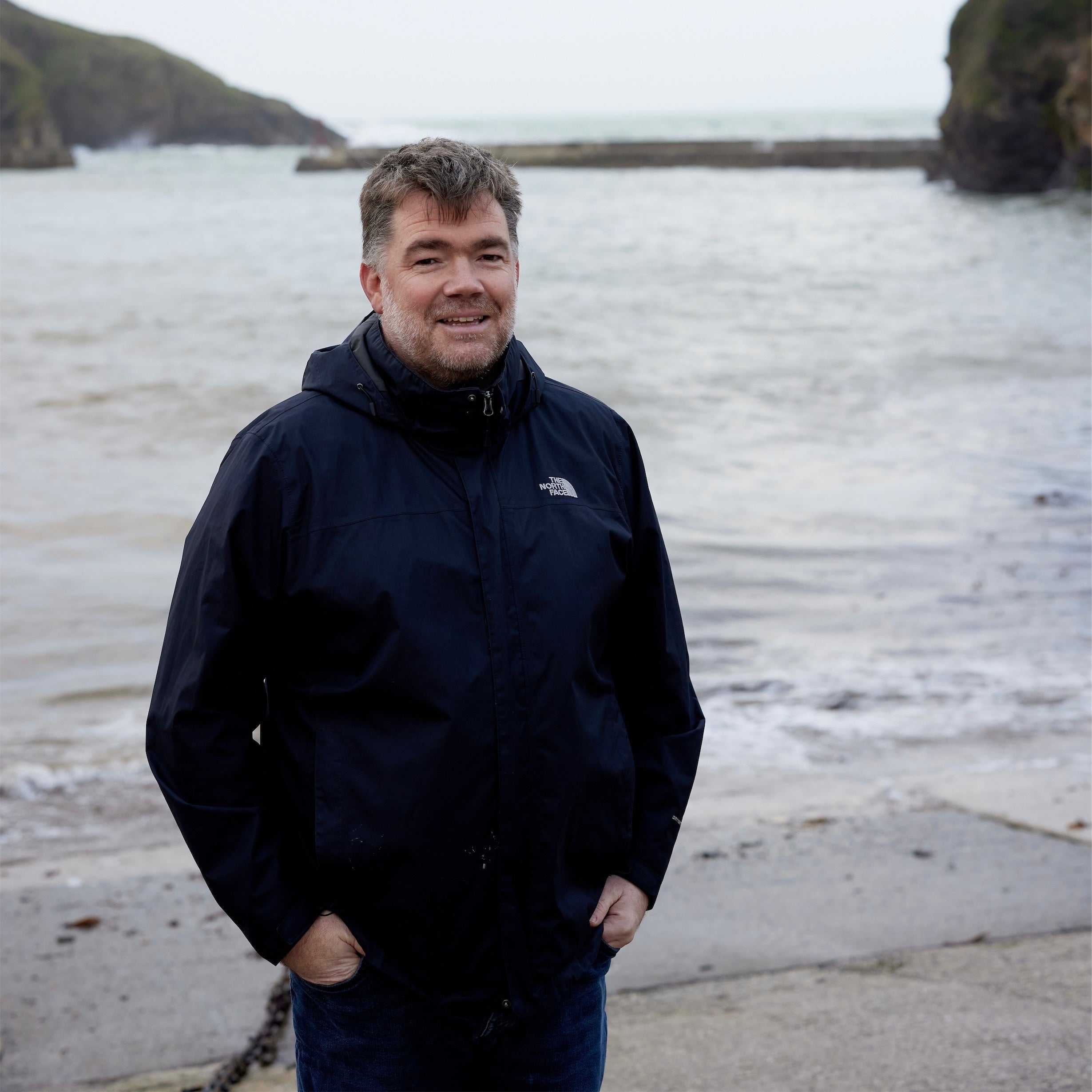
Mark McCabe is a Director and Head Chef of the (Green Michelin Star) Ethicurean Restaurant in Wrington, Somerset.
By Mark McCabe
The era of globalisation and the commoditisation of food has always been a tightrope act. Consumer demand, at least in the West, for unlimited choice all year round, coupled with our expectation of cheap food, has led to complex supply chains through multiple countries that rely on ‘just-in-time’ deliveries to supermarkets. We’ve grown used to this bizarre way of eating, thinking nothing of the disconnect we now have from our groceries and rarely acknowledging that often our food is better travelled than many of us.
These days however, you’d be hard pressed to find many positives in the global food market. Still reeling from the COVID-19 pandemic, which saw massive restriction of workers in the sector, reduced global trade and changing consumer demands stretch the supply chain to the max, the war in Ukraine and extreme weather events have brought the system closer to breaking point than ever before.
It’s a system that’s designed to work so long as every cog is turning as it should, and for the most part, over the past 50 years, it’s worked extremely well. Countries across the globe have been able to trade relatively freely, encouraging economic growth and supplementing their homegrown crops with foods that their climates are not well suited to growing. Up until 2015 the number of people classed as undernourished was dropping year on year1 as poorer countries were able to import grain and other staples from more fertile countries, leading people to tentatively suggest that hunger might finally be a thing of the past.

However, the seemingly endless bounty of cheap food has encouraged us to be extremely wasteful. The UN Environment Food Programme calculated that over 900 million tonnes of food are wasted each year2. That’s around 17% of everything that’s produced worldwide. With food this plentiful, surely there’s no need for concern?
Well, even before the pandemic, cracks were beginning to show. The number of hungry people worldwide had begun to creep back up, reaching levels not seen for 15 years, even when food production had easily been outstripping population growth - suggesting that something had started to go seriously wrong.
It’s a complex issue with no easy answers, but part of the problem is because people all over the world have primarily started eating the same food. Just four plants (maize, rice, wheat and soya) now account for 60% of the global calorie use3, putting enormous strain on the countries that produce these crops, not to mention the environmental stresses of growing these plants so intensively.
Just four plants (maize, rice, wheat and soya)
now account for 60% of the global calorie use4

One crop in particular that never seems far from the headlines is wheat. A hugely important global crop and one experiencing a perfect storm of issues right now. Ukraine and Russia have long been known as the breadbasket of Europe, accounting for 25% of international wheat exports5. Russia’s blockade of Ukrainian ports, coupled with the fighting in the country’s eastern region where a lot of the farmland is, is leading experts to suggest that Ukraine’s output with be down by 35% this year6. A figure that could further decrease if the conflict continues long enough to prevent planting for next year’s harvest. Countries like Egypt, which import nearly 60% of their cereals from Russia and Ukraine face a real struggle to avoid mass hunger.
Ukraine and Russia have long been known as the breadbasket of Europe, accounting for 25% of international wheat exports.7
On top of this, India, which accounts for 10% of global wheat production, was expected to make up some shortfalls. However, the shortfall remains after suffering some of its worst harvests due to extreme heatwaves. India took recent steps to ban wheat exports to ensure they have enough grain to feed their population this year, further compounding the issue8.
Thankfully, none of this will lead to immediate grain shortages in the UK. We are mainly self-sufficient in wheat, producing 85% of the grain we use and importing the rest from stable countries, mainly Germany and Canada9. So whilst we are not nearly in as dire a situation as other countries, it doesn’t mean that we are entirely insulated from the crisis either.
One by-product of the war that will have a significant effect on us is a shortage of fertilisers. Russia is the world’s largest exporter of fertilisers, and the price has skyrocketed since the invasion, largely due to the economic sanctions the West has imposed. Rising natural gas prices have also massively affected the production of nitrogen, a crucial input for crop yield. Fertilisers are now at a 34 year high in price and there are reports of farmers already having to choose very carefully what they plant, knowing that the tight margins in farming are now far, far tighter. Some farmers are already opting to reduce their fertiliser use, planting peas and beans instead to fix nitrogen into the soil, but this will have an impact on yield10. If this is replicated across the whole farming sector, it may soon result in shortages at home.

The difficulty with these modern wheat varieties that are grown for commodity production worldwide is that they have been bred specifically to be grown in high intensity environments. Wheat used to be tall to out-compete the weeds, but when we introduced chemical fertilisers to increase yield, the plants became too top-heavy and fell over, making them harder to harvest. So the next step was to breed them to have shorter stems but this then required herbicides to kill off the weeds that were no longer shaded out by the taller grass.
Many farmers are entwined in the commodities market, which only has a demand for this type of grain and are locked into contracts with large seed companies costing millions of pounds, so options to grow something else are almost nil. In a world where it’s estimated that just four companies control 90% of the wheat trade, it’s easy to see why farmers may feel stuck between a rock and a hard place11.
I’m no fan of artificial inputs in farming. I believe the environmental damage they cause is beyond doubt, and any reduction in their use can only be a good thing but it is hard to see an outcome here that doesn’t result in lost livelihoods and food shortages in the short term. However, I also think the commodities system of trading food is broken and needs serious change.
It can be hard to know what to do and how to help.

One thing I think we can all do is highlight and support another way to farm - a method that produces food less intensively and works with nature rather than against it.
There are a growing number of farmers who are equally focused on restoring soil health and being custodians to the land as they are on producing food. They plant nitrogen fixing crops in tandem with arable to balance what they take with what they give back to the soil. Rather than focusing on maximum yield from a single crop, these progressive farmers offset the higher output of the more intensive methods of farming by growing other things too. They might rear animals they can feed those nitrogen fixing legumes to for example - creating a closed loop system that’s better of the planet and for us. A nod to the pre-Green Revolution farms of old.
For those of us who are in the privileged position of being able to choose where our food comes from, a lot can be achieved by buying from someone who farms in this way. If you use flour at home, or in your workplace, a simple switch will cost you nothing more than forethought and a little research. Get to know your local food network. Find those who place the planet and our nourishment at the centre of how they farm. Buy direct from them and show them that we appreciate knowing who grows our food and where it comes from.
Get to know your local food network
Supporting these farmers doesn’t directly help those who are faced with making difficult decisions over the next 12 months or so. It won’t help offset any potential food shortages or price rises the country is facing but by helping these smaller, mixed farms to succeed we may give confidence to other farmers who are unsure about what their future holds or which direction to take. And if we can convince a small handful of farmers to do it, they may convince another small handful and soon, as Arlo Guthrie once sang, ‘friends, they may think it’s a movement. And that’s what it is.’
By helping these smaller, mixed farms to succeed we may give confidence to other farmers who are unsure about what their future holds or which direction to take.
If you want to buy excellent, non-commodity flour from farmers doing things differently, here’s where to fix your intentions:
1 https://www.who.int/news/item/12-07-2021-un-report-pandemic-year-marked-by-spike-in-world-hunger 2 https://www.bbc.co.uk/news/science-environment-56271385 3 https://agupubs.onlinelibrary.wiley.com/doi/full/10.1029/2017RG000591 4 https://agupubs.onlinelibrary.wiley.com/doi/full/10.1029/2017RG000591 5 https://www.nytimes.com/2022/02/24/business/ukraine-russia-wheat-prices.html 6 ttps://www.theguardian.com/world/2022/may/06/ukraine-wheat-harvest-may-fall-by-35-percent-satellite-images-suggest 7 https://www.nytimes.com/2022/02/24/business/ukraine-russia-wheat-prices.html 8 https://www.nytimes.com/2022/05/14/world/asia/india-wheat-export-ban.html" 9 https://www.ukflourmillers.org/wheat 10 https://www.newstatesman.com/business/2022/04/the-uk-is-sleepwalking-into-a-food-crisis 11 https://www-cdn.oxfam.org/s3fs-public/file_attachments/rr-cereal-secrets-grain-traders-agriculture-30082012-en_4.pdf









